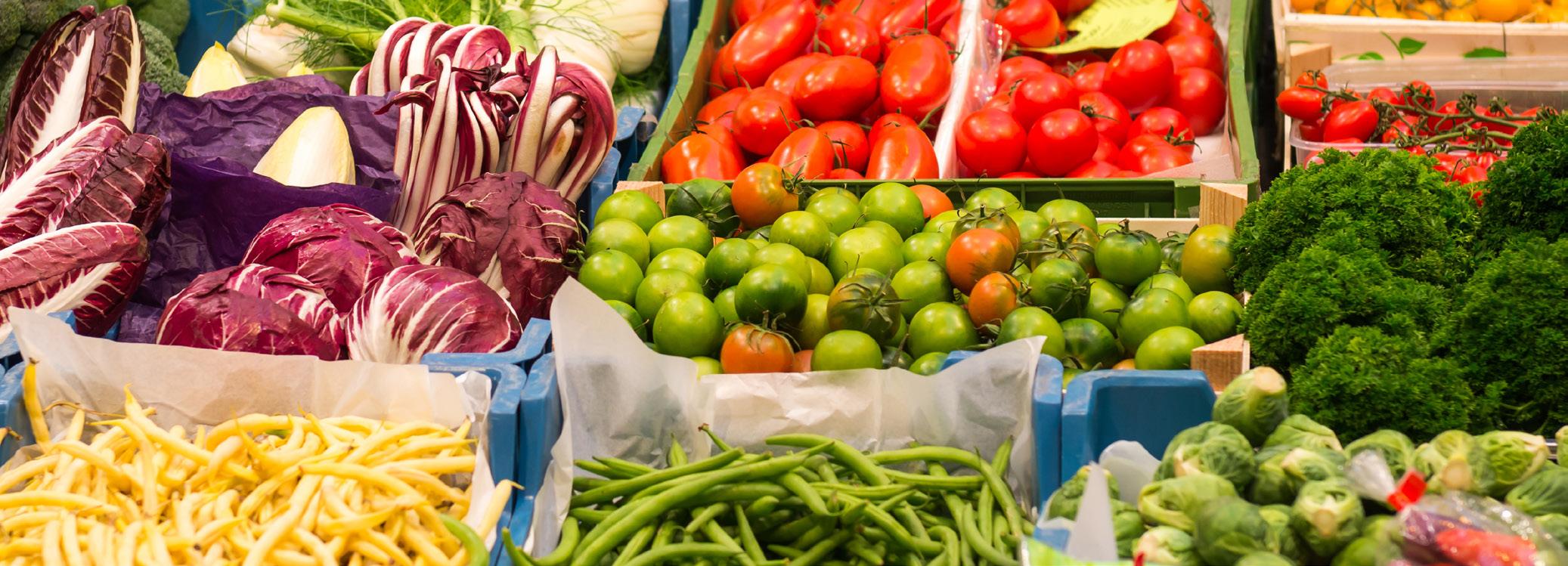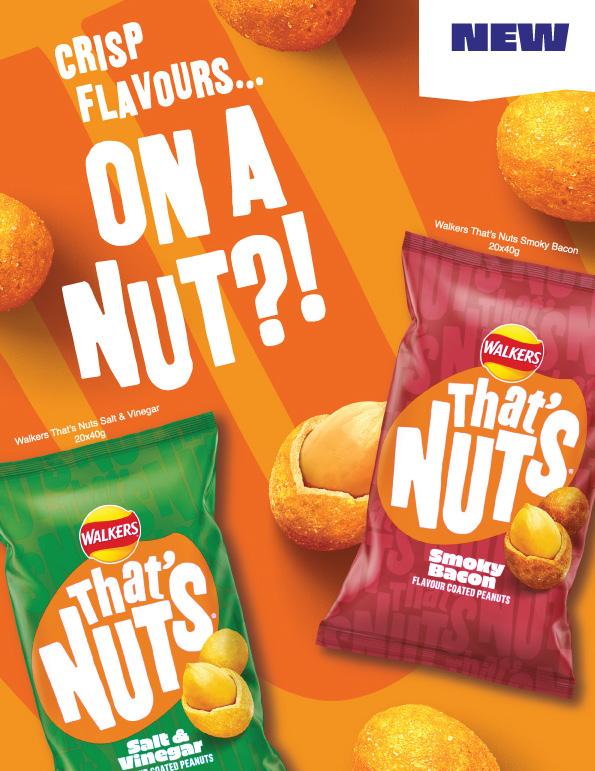F&B MARKET TRENDS



Food and drink prices in the UK are rising at their slowest pace in over a year, while overall inflation has remained steady for the third consecutive month.
The inflation rate for food and non-alcoholic drinks dropped to 4.5% in the year to September, down from 5.1% in August. Prices are still increasing, but at a slower rate. Between August and September, overall prices for food and non-alcoholic drinks actually fell by 0.2% — the first monthly decline in 16 months.
This drop was mainly driven by slightly lower prices for vegetables, dairy products, bread and cereals, fish, and soft drinks. In contrast, red meats and chocolate continued to rise in price.

• Make use of the best price purchasing and mitigation strategies provided by your Entegra operations consultant.
The full impact of Europe’s heatwaves and lack of rainfall is still uncertain. The total growing area across Europe has increased by 5%, but this growth is largely offset by a 4% rise in global demand year on year.
Imported lettuces are facing major challenges due to adverse growing conditions, particularly water scarcity caused by summer heatwaves. Rising labour and transport costs are also driving doubledigit inflation across the category, with popular varieties such as Iceberg and Cos most affected.
The long-term outlook is more positive, as growers invest in mechanisation and develop climateresilient varieties, although these benefits are expected to appear only in the medium term.
Similar challenges are affecting spinach, but to an even greater extent. Some lines are experiencing inflation of around 50%. Where possible, it is recommended to purchase unwashed spinach, as rising water costs across Europe are significantly increasing the production costs of washed spinach.
The UK enjoyed a strong summer strawberry season. However, as supply transitions to Europe for the winter months, the Spanish strawberry sector remains under pressure due to water scarcity and ongoing pesticide concerns.

Dutch glasshouse strawberries are also facing difficulties, driven by rising labour and energy costs.
Melon prices continue to rise, influenced by higher global costs for fuel, fertiliser, packaging, and freight, along with increasing UK port charges. These port challenges are prompting some producers to bypass sea routes into the UK, opting instead for longer road routes, which further extend the supply chain.
Rising costs for fertiliser and agrochemicals are keeping prices steady as we move into the final months of 2025. However, pineapple inflation remains more manageable compared to melons.
Tomatoes had a strong summer, supported by stable weather and healthy crop development. As we move into winter and UK supply declines, the outlook for imported tomatoes is less positive.
Ongoing virus issues and delayed planting of Spanish crops are tightening supply. Growers have also shifted preferences toward plum tomatoes, resulting in limited availability of round varieties.
Hot, dry weather has reduced UK yields and quality, particularly for carrots. Irrigation has become essential, but high water costs are adding to already elevated production expenses. With lower yields, the UK is increasingly reliant on imported root vegetables.
On a brighter note, parsnips continue to show strong quality and stable prices as we approach the festive season.
Citrus growers are facing a difficult season due to extreme weather, water shortages, and changing trade flows. Turkey, Egypt, Morocco, and Spain are all reporting lower yields, particularly for oranges, mandarins, and lemons, keeping prices firm. South Africa has benefited from increased demand, while storms and pest issues have further disrupted European output.
The lemon harvest has faced several setbacks this year. The Spanish crop ended early, while frost, pest problems, and water restrictions have further reduced yields. Smaller crops have shifted supply toward more expensive lemon varieties.
The global orange market remains mixed. Orange juice prices have stabilised following higher yields in Brazil, the world’s largest producer. Meanwhile, easy peelers are holding steady as supply chains adjust to source from the strongest producing regions.
• Review your menus to ensure produce has shifted from summer to autumn/winter selections, removing soft fruits, tomatoes, and melons where possible.
• Use British seasonal produce to maximise seasonality, manage costs, and reduce food miles.
• Ensure potatoes are portioned correctly to minimise waste. Chips are a common area of over-portioning — use a vessel or chip scoop to measure portions accurately.
• Autumn and winter lend themselves to robust vegetable dishes. Use second-class or “wonky” produce where appropriate for roasts, purées, and gratins.
UK milk production is currently at its highest level in a decade, with some producers now exceeding processing capacity. Despite this, farmgate prices have remained stable for conventional milk and have risen for organic. Prices are being supported by stronger export demand from Europe, driven by poor spring flushes and declining herd numbers.
Across Europe, confidence in the milk sector has also been affected by outbreaks of Foot and Mouth and Bluetongue diseases.
Ops Top Tips:
• For milk service, review the size of jugs used at breakfast or with tea and coffee. Check whether they are oversized or placed on tables too early, leading to unnecessary waste. Serve milk only when required.
• Consider using milk pergals — they are the most economical option and help reduce both waste and packaging.
• Review butter portioning to ensure balance between presentation and cost. If you notice high levels of waste, reduce portion sizes; 10–15 grams per portion is typically appropriate.
• Many suppliers offer both dairy and eggs. Make sure you are purchasing from the most competitive source available.
UK butter prices have begun to ease and remain at a more stable level, with some varieties even showing small levels of deflation. However, these reductions are limited, and prices are expected to stay relatively high through the remainder of 2025.
Stable farmgate milk prices and reduced cheese stocks have helped keep cheese prices steady. As European demand for milk continues to rise heading into winter, it is unlikely that cheese prices will experience any downward movement in the near term.

Turkey supply across the UK and EU remains extremely tight heading into Christmas 2025. Very little UK turkey is available, with most domestic quotas directed to major retailers. Prices are currently around 30% higher than last year and continue to rise as demand intensifies.
EU and South American sources offer the best availability, but early planning is essential to secure volumes ahead of the festive period. With limited UK production, reduced import options and strong retail prioritisation, shortages are highly likely. Purchasing early is strongly recommended to ensure both the best price and availability this season.
The beef market remains under severe and sustained pressure, with UK and Irish cattle prices up 30–35% since late 2024. Cattle numbers have been falling year on year, with an estimated 3% reduction in stock over the past year. Many farmers are withholding cattle in anticipation of higher future prices.
Export demand remains strong from France, China, and parts of Asia such as Thailand. Shipping and import delays from key South American suppliers, combined with ongoing EU bans, mean that South American beef has not supplemented UK supply at the required levels. With reduced herd numbers, logistical challenges, and strong export competition, beef prices are expected to remain elevated well into 2026.
The poultry sector continues to experience significant supply challenges. UK producers are moving towards higher welfare standards under the Better Chicken Commitment, which reduces stocking densities and overall output while increasing production costs.
Globally, avian flu outbreaks in Poland and Belgium and a rise in Newcastle Disease cases have led to flock culls, redirecting demand into other EU markets and creating widespread shortages. Feed costs are also being affected by US tariff-related grain price increases. As a result, chicken prices are expected to remain high and volatile, with strong demand for fresh chicken keeping supply tight.

Pork remains comparatively stable and continues to offer good value relative to other proteins. UK production is expected to hold steady at around 960,000 tonnes , supported by consistent clean pig numbers and carcase weights near 90 kg . EU pig prices have rebounded, narrowing the gap with the UK as tight poultry and beef supplies increase pork demand. Exports, particularly to China, have grown 20% year on year, while imports are up 9%, driven by recovering German volumes. With positive producer margins and steady performance, pork presents growth opportunities for menus, particularly when its health and sustainability credentials are promoted more widely.
Lamb prices remain exceptionally strong, sitting 25% above the five-year average and up 40% year on year. Tight supply is being driven by the UK breeding flock falling to its lowest level since 1996 (13.8 million head), compounded by poor weather and the Shallenberger virus reducing lambing rates.
Imports from New Zealand and Australia are up 10%, though shipping issues persist, while exports have increased 13% due to strong EU demand. Retail sales have softened by 10%, but Halal demand now accounts for 30% of the UK market. With global production constrained and export activity remaining firm, prices are expected to stay high into 2026.
• Review your turkey volume requirements for the festive season with your operations consultant. Pre-order early to lock in current prices.
• Review portion sizes: if serving 10oz, consider moving to 9oz, or list weights in grams (e.g. 10oz/284g to 9oz/255g, 8oz/227g to 7oz/198g).
• This time of year lends itself to slow-cooked dishes and winter warmers. Use cheaper cuts such as beef shin, brisket, lamb shoulder, neck, or venison haunch.
• Start planning your festive production early — for example, prepare pigs in blankets ahead of time. A breakfast chef making 100 per day throughout November could produce over 3,000 by the start of December.
European durum wheat production is expected to improve following last year’s historic lows in France and Italy. However, yields are still being affected by drought and heatwaves, which continue to challenge overall output.
The market continues to face difficulties, with production deficits maintaining high price volatility and limiting supply stability.
Unprecedented global demand has driven pistachio prices well above typical levels. Ongoing hostilities in Iran, one of the world’s largest producers, may further tighten supply in the coming months.

• Measure pasta portions before cooking — 75g to 100g per serving is the ideal range to help reduce waste.
• Review your sugar offering to limit wastage. Consider using pre-portioned options, offering less sugary snacks, or natural sweeteners such as honey and agave.
Although salmon prices are currently low, they are expected to experience double-digit inflation by the end of 2025. Increased seasonal demand over the festive period, combined with lower supply from Norway, is likely to push prices up sharply as the year closes.
Supply remains challenging, with uncertainty surrounding popular species due to reduced quotas and ongoing geopolitical pressures. Rising tariffs, freight costs, labour expenses, and currency fluctuations are contributing to significant price increases across the category. Where possible, it is recommended to consider more stable alternative species such as hake and plaice.
Seabass prices have risen sharply in recent months due to challenges faced by Turkish producers. Higher sea temperatures have increased fish mortality rates, while rising production costs have further strained supply. Prices are expected to remain elevated into 2026.
As we move into autumn, UK native lobster supply begins to decline, shifting the focus towards imported products. Imports from Canada should help stabilise availability, but inflationary pressure is still expected across the wider shellfish market.
Poor fishing conditions are limiting monkfish supply, while strong demand continues to drive prices upward.
• Review the fish species used for dishes such as fish and chips. If your menu specifies the fish type, consider simplifying the description to “fish and chips,” allowing you to use the most cost-effective option available.
• Begin planning your festive period requirements early. Purchase and freeze fish now to secure both availability and the best possible price.
The global coffee market is experiencing significant volatility through Q3 and Q4 2025, driven by extreme weather, geopolitical developments, and shifting demand patterns.
On the supply side, Brazil, the world’s largest Arabica producer, suffered its worst drought in 70 years during August–September 2024, followed by heavy rains in October. These extremes are expected to reduce the 2025/26 harvest by 8–10%. In addition, the U.S. imposed a 50% tariff on Brazilian coffee in August 2025, disrupting exports to its largest market and putting pressure on global supply chains.
In contrast, Colombia achieved its highest coffee production in more than 30 years during the 2024/25 cycle, with a 17% year-on-year increase. However, output is expected to dip in the upcoming cycle due to natural tree cycles and heavy rainfall in early 2025. Vietnam is set for a strong 2025/26 Robusta crop, which may help ease pressure in the Robusta market.
In terms of pricing, Arabica prices spiked to a 47-year high in early 2025 amid concerns about Brazil’s crop but have since moderated as harvesting progressed. Robusta prices, on the other hand, have more than doubled year on year, largely due to weak yields in Indonesia and Vietnam. The market remains highly sensitive to supply risks, with futures fluctuating in response to weather events and trade developments.
On the demand side, global coffee consumption is projected to reach record levels during the 2023–24 season, showing continued resilience despite inflation. In Nigeria, retail prices doubled in 2024 following limited Brazilian supply, putting pressure on consumers.

Several key risks continue to shape the market. Climatic uncertainty—especially low rainfall and high temperatures in Brazil—threatens future harvests. Trade tensions, such as new U.S. tariffs, could also reshape global trade flows, potentially diverting more Brazilian supply to the EU and UK, which may help relieve local prices. Meanwhile, speculative trading has amplified volatility, with large investor positions earlier in the year reacting sharply to supply news.
• Drive beverage sales by encouraging your teams to actively promote drinks in lounge areas and through table service, maximising spend per guest.
• Assess coffee production methods to identify any waste. If over-brewing is an issue, reduce batch sizes or repurpose leftover coffee for iced drinks, desserts, or granitas.
• Evaluate serving vessels to ensure they are appropriately sized for the portions being sold or required.
• Review pricing to optimise profitability. Consider a tariff review with your operations consultant and compare against local competitors before making adjustments.
Looking ahead, the short-term outlook for Q3 and Q4 2025 is for continued volatility, with the potential for further price increases if supply tightens or demand continues to grow. By 2026, prices are expected to stabilise gradually as key producers such as Colombia and Vietnam recover and as global markets adjust to recent trade and policy changes.

As we move into the winter months, there has been a steady increase in purchases of sanitiser and disinfectant wipes. This seasonal rise is entirely expected, and we’re pleased to confirm that no shortages are anticipated. Supplies remain stable and readily available.
Sustainability continues to be a key priority for many customers. While demand for eco-friendly solutions is growing, price sensitivity often influences how quickly these products are adopted. Striking the right balance between premium sustainable options and cost-effective alternatives remains crucial. We’re committed to supporting both, providing greener choices without compromising on value.
There has been an increase in linen rentals for short-term holiday lets, a trend expected to continue throughout the season. However, this will not impact supply or orders for our larger, regular customers.
Since April, there have been no significant cost increases, which is encouraging news for suppliers and customers alike. Some upward movement in costs is anticipated as we approach next April, driven by broader factors such as supplier pricing, National Insurance adjustments, utility rates, and fuel costs.
We will continue to monitor the situation closely and keep you informed of any changes.
Ensure you are using Entegra for all your non-food requirements. We have competitive deals in place with many of the country’s leading suppliers — ask for quotes today.




